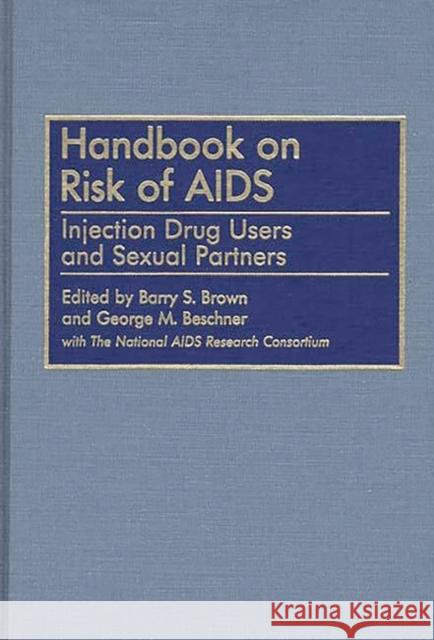Handbook on Risk of AIDS: Injection Drug Users and Sexual Partners » książka
Handbook on Risk of AIDS: Injection Drug Users and Sexual Partners
ISBN-13: 9780313283741 / Angielski / Twarda / 1993 / 632 str.
Intravenous drug users account for nearly one-third of the current AIDS cases in the United States--second only to gay males--and are responsible for 72 percent of female and 59 percent of pediatric cases of AIDS. Thus the National Institute of Drug Abuse launched a major effort in 1987 to locate hidden users and to see how they function and to evaluate strategies and community-based programs in 50 cities and 60 nearby communities around the country in order to lower risks to IV users and to reduce the dangers that they pose to others in the population. Brown and Beschner present the very latest findings and come to well-tested conclusions about how to change behaviors positively. This handbook is written for use in college, university, and professional libraries and for students, teachers, policymakers, and practitioners in public health service and in public policy at all governmental levels to study carefully.
Brown and Beschner open with an introduction showing how injection drug users and their sexual partners are at risk for aids. Part I describes the spread of AIDS in the United States and Puerto Rico. Part II depicts patterns of injection drug and crack use and their effect on sex partners. Part III deals with gender issues. Part IV goes into demographic and background factors. Part V discusses key issues in the use of drug abuse treatment. Part VI analyzes outreach and behavior change strategies. And Part VI looks into how risk can be reduced as a result of outreach and specific intervention strategies. The final chapter comes to some conclusions about the effectiveness of various interventions by the National AIDS Demonstration Research Project. Background readings also add to the importance of this major reference.











